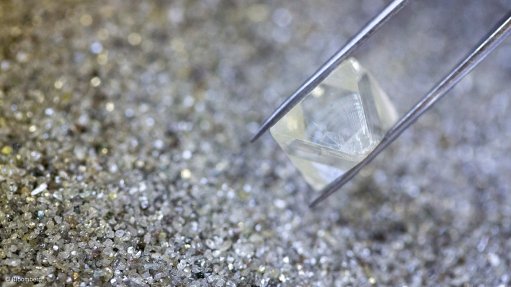Aussie midtier miners survived the worst and are making a comeback
JOHANNESBURG (miningweekly.com) – A turning point appears to have been reached for Australian midtier miners, as improvements in dividend payout, market capitalisation, cash flow from operations and capital expenditure (capex) point to an industry rebound.
However, challenges still lie ahead for ASX-listed miners with a market value of below $5-billion, a new report by advisory group PwC finds.
The ‘Aussie Mine 2016’ report, published on Tuesday, highlights that the midtier mining industry has returned to positive earnings before interest, taxes, depreciation and amortisation of A$3.3-billion, from $800-million in 2015. The market capitalisation of the top 50 midtier miners increased by 23% to $44.5-billion, capex increased by 37% to $5.6-billion and ordinary dividend payouts increased by 21% to $537-million.
“We’re seeing signs that the midtier has hit the bottom, survived the worst and is now making a comeback,” said PwC mining leader, Chris Dodd, highlighting that increases in market value, capex and dividends point to confidence returning.
“Operating revenues are also up by 4% to $17.4-billion and the miners have done this without increasing production costs, which shows they have walked the talk when it comes to cost control.”
Gold dominated 2016 with an aggregated market capitalisation of $20.6-billion at June 30, a 158% increase on 2015. In dollar terms, the market capitalisation increase for midtier gold miners was $12.6-billion, more than all other commodities combined.
“It has been an ideal environment for gold stocks with high prices mid-year and a refuge for investors in times of global uncertainty. We have also seen lithium debut as a rising star in 2016 following four new entrants taking the list’s total to five producers and a combined 477% market capitalisation increase.”
Dodd cautioned, however, that gruelling market conditions and poor performance have continued in 2016 with the midtier 50 recording an aggregated after-tax net loss of $1-billion.
“Against these tough market conditions a turning point appears to have been reached in 2016 with impairments down by 36%.”
CROSSROADS
The composition of the 50 midtier companies has changed significantly in the decade since ‘Aussie Mine’ was first published. The low cost iron-ore majors have squeezed out the midtiers - between 2014 and 2016 their market capitalisation decreased by 71%, from $6.3-billion to $1.8-billion. Midtier coal miners, however, have consolidated and emerging technologies have also resulted in a strong demand for lithium and graphite.
“It’s to be expected in the mining industry that we’ll see winners and losers, that’s the way it’s been for the past 100 years,” Dodd said.
“Today’s midtier miners are faced with challenging future scenarios though that will be highly competitive, more volatile and technology driven. The sustainability of improved margins will also need to be proven, particularly if the broader industry recovers.
“Increased regulation is also making it harder to be a miner and in the past year we’ve also seen trends changing in the deals and equity markets. The average deal value decreased from $398-million in 2015 to $248-million in 2016, yet deal numbers increased with players making strategic counter-cyclical asset purchase decisions.
“However, while the equity market activity increased in 2016, from $0.8-billion to $1.2-billion, the majority of the movement has been fuelled by investor appetite for exposure to commodities needed for emerging technologies. Graphite and lithium capital raisings, for instance, represented more than 50% of the cash received from share issues, up from 12% in 2015.
“On a broader level, the equity market was reluctant to provide capital - out of the 27 equity raisings between July 1, 2015 and October 11, 2016, six experienced shortfalls and one offer was withdrawn,” Dodd said.
According to the report, the mining industry will continue to be challenged in the future by technology developments to minimise environmental impacts, volatile prices and hard to predict demand.
“The players that can embrace technology and innovation as the new norm and rebuild the public’s trust in the industry to be socially responsible operators will be best placed for success,” Dodd said.
Comments
Press Office
Announcements
What's On
Subscribe to improve your user experience...
Option 1 (equivalent of R125 a month):
Receive a weekly copy of Creamer Media's Engineering News & Mining Weekly magazine
(print copy for those in South Africa and e-magazine for those outside of South Africa)
Receive daily email newsletters
Access to full search results
Access archive of magazine back copies
Access to Projects in Progress
Access to ONE Research Report of your choice in PDF format
Option 2 (equivalent of R375 a month):
All benefits from Option 1
PLUS
Access to Creamer Media's Research Channel Africa for ALL Research Reports, in PDF format, on various industrial and mining sectors
including Electricity; Water; Energy Transition; Hydrogen; Roads, Rail and Ports; Coal; Gold; Platinum; Battery Metals; etc.
Already a subscriber?
Forgotten your password?
Receive weekly copy of Creamer Media's Engineering News & Mining Weekly magazine (print copy for those in South Africa and e-magazine for those outside of South Africa)
➕
Recieve daily email newsletters
➕
Access to full search results
➕
Access archive of magazine back copies
➕
Access to Projects in Progress
➕
Access to ONE Research Report of your choice in PDF format
RESEARCH CHANNEL AFRICA
R4500 (equivalent of R375 a month)
SUBSCRIBEAll benefits from Option 1
➕
Access to Creamer Media's Research Channel Africa for ALL Research Reports on various industrial and mining sectors, in PDF format, including on:
Electricity
➕
Water
➕
Energy Transition
➕
Hydrogen
➕
Roads, Rail and Ports
➕
Coal
➕
Gold
➕
Platinum
➕
Battery Metals
➕
etc.
Receive all benefits from Option 1 or Option 2 delivered to numerous people at your company
➕
Multiple User names and Passwords for simultaneous log-ins
➕
Intranet integration access to all in your organisation


















